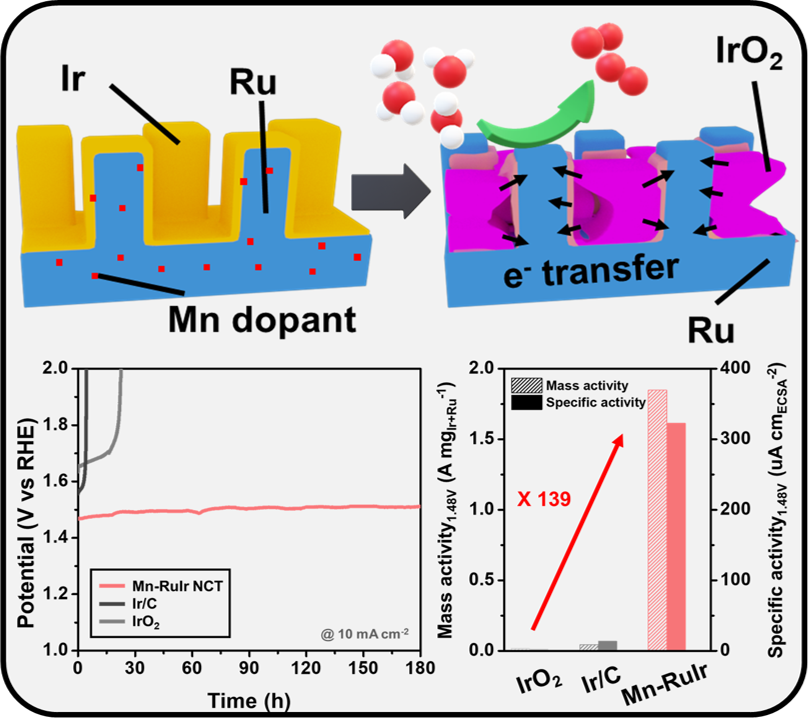Designing an efficient and durable electrocatalyst for the sluggish oxygen evolution reaction (OER) at the anode remains the foremost challenge in developing proton exchange membrane (PEM) electrolyzers. Here we report a highly active and durable cactus-like nanoparticle with an exposed heterointerface between the IrO2 and the low oxidation state Ru by introducing a trace amount of Mn dopant. The heterostructure fabrication relies on initial mixing of the Ru and Ir phases before electrochemical oxidation to produce a conjoined Ru/IrO2 heterointerface. Benefitting from electron transfer at the heterointerface, the low oxidation state Ru species showed excellent initial activity, which was maintained even after 180 hours of continuous OER test. In a half-cell test, the Mn-doped RuIr nanocactus (Mn-RuIr NCT) achieved a mass activity of 1.85 A mgIr+Ru-1 at 1.48 VRHE, which is 139-fold higher than that of commercial IrO2. Moreover, the superior electrocatalytic performance of Mn-RuIr NCT in the PEM electrolysis system ensures its viability in practical uses. The results of the excellent catalytic performance for acidic OER indicate that the heterostructuring robust rutile IrO2 and the highly active Ru species with a low oxidation state on the catalyst surface drive a synergistic effect.

https://onlinelibrary.wiley.com/doi/10.1002/smtd.202101236
 Safeguarding the RuO2 phase against lattice oxygen oxidation ...
Safeguarding the RuO2 phase against lattice oxygen oxidation ...
 Dynamic Water Promotes Lithium-Ion Transport in Superconcentr...
Dynamic Water Promotes Lithium-Ion Transport in Superconcentr...

















